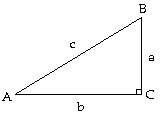Find the domain of the function.f(x) = 
A. {x|x ? -19}
B. {x|x > -19}
C. {x|x ? 0}
D. all real numbers
Answer: D
You might also like to view...
Solve the problem.Estimate the answer by rounding each number to the nearest ten.99 + 51 + 55 + 92 + 65
A. 362 B. 360 C. 400 D. 370
Multiply the polynomials using the special product formulas. Express the answer as a single polynomial in standard form.(12x - y)2
A. 144x2 - 12xy + y2 B. 144x2 - 24xy - 2y2 C. 144x2 - 24xy + y2 D. 144x2 + y2
Solve the problem.The gas mileage, m, of a compact car is a linear function of the speed, s, at which the car is driven, for  For example, from the graph we see that the gas mileage for the compact car is 45 miles per gallon if the car is driven at a speed of
For example, from the graph we see that the gas mileage for the compact car is 45 miles per gallon if the car is driven at a speed of 
 Find and interpret the average rate of change in gas mileage between speeds of 40 mph and 90 mph.
Find and interpret the average rate of change in gas mileage between speeds of 40 mph and 90 mph.
A. -0.5 miles per gallon/mph; Between speeds of 40 mph and 90 mph, gas mileage decreases at a rate of 0.5 miles per gallon for each 1 mph increase in speed. B. -0.75 miles per gallon/mph; Between speeds of 40 mph and 90 mph, gas mileage decreases at a rate of 0.75 miles per gallon for each 1 mph increase in speed. C. 0.5 miles per gallon/mph; Between speeds of 40 and 90 mph, gas mileage increases at a rate of 0.5 miles per gallon for each 1 mph increase in speed. D. -0.5 miles per gallon/mph; Between speeds of 40 and 90 mph, speed decreases at a rate of 0.5 miles per hour for each 1 mpg increase in gas mileage.
Solve the right triangle shown in the figure. Round lengths to one decimal place and express angles to the nearest tenth of a degree.  a = 16.7, c = 22.4
a = 16.7, c = 22.4
A. A = 48.2°, B = 41.8°, b = 14.9 B. A = 48.2°, B = 48.2°, b = 14.9 C. A = 53.3°, B = 36.7°, b = 27.9 D. A = 48.2°, B = 41.8°, b = 27.9